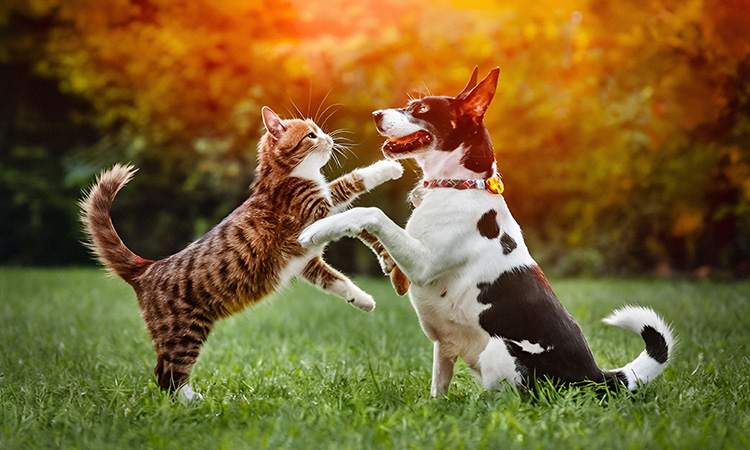How AI is Helping Us Understand What Our Pets Are Saying
How AI is Helping Us Understand What Our Pets Are Saying

Imagine a world where your dog could tell you exactly why they’re barking, or your cat could explain the meaning behind their meows. Being able to understand what their purr or woof means you’re one step ahead of strengthening your bond with your furry friend. While this might sound unlikely or like a scene from a sci-fi movie, recent advancements in artificial intelligence (AI) are bringing us closer to understanding our pets’ communications.
Decoding Animal Language
For years, scientists have been fascinated by animal communication. Traditional studies have focused on observing behaviors and vocalizations to interpret what animals might be expressing. However, the complexity and variability of these communications have made it challenging to draw definitive conclusions.
Enter AI. With its ability to process vast amounts of data and identify patterns, AI offers a promising avenue to decode the intricate languages of animals, mainly cats and dogs.
AI-Powered Pet Translation Devices
Several innovative devices and applications have emerged, aiming to bridge the communication gap between humans and their pets:
• Shazam for Pets:
Developed by Personifi AI, this smart collar uses AI to analyze your pet’s vocalizations and behaviors, translating them into human language. The collar features a speaker that vocalizes your pet’s needs or emotions, providing insights into their thoughts and well-being.
• MeowTalk:
This app focuses on decoding cat meows. By recording your cat’s vocalizations, MeowTalk uses AI to interpret and translate them, helping owners understand their feline friends better.
• Zoolingua:
Founded by animal behavior expert Dr. Con Slobodchikoff, Zoolingua aims to develop technology that translates dog barks and body language into human language, enhancing the bond between dogs and their owners.
How Does It Work?
These AI-driven tools typically operate by collecting extensive data on animal vocalizations and behaviors. Machine learning algorithms then analyze this data to identify patterns and correlations between specific sounds or actions and particular needs or emotions. Over time, as the AI processes more data, its interpretations become more accurate, offering pet owners valuable insights into their pets’ inner worlds.
What To Expect: Challenges and Considerations
While the prospect of conversing with our pets is exciting, it’s essential to approach these developments with realistic expectations:
• Complexity of Animal Communication:
Just like us humans, animal communication is multifaceted, often involving a combination of vocalizations, body language, and even chemical signals. Decoding this complexity requires comprehensive data and sophisticated algorithms.
• Individual Variations:
Just as humans have unique ways of expressing themselves, individual animals may have distinct communication styles. An AI model trained on one group of animals might not accurately interpret another’s signals.
• Ethical Implications:
As we develop tools to understand animals better, we must consider the ethical implications of such technologies. Respecting animal autonomy and ensuring that these tools are used to enhance, not exploit, our relationship with them is paramount.
Enhancing the Human-Animal Bond
The primary goal of these AI innovations is to deepen the connection between humans and their pets. By gaining a better understanding of our pets’ needs and emotions, we can provide more tailored care, improve their well-being, and strengthen the bond we share.
Moreover, as our understanding of animal communication grows, it could have broader implications for areas like wildlife conservation, veterinary care, and even the development of more advanced pet insurance models that consider an animal’s emotional and psychological health.
Conclusion
While we’re still in the early stages of fully decoding animal languages, the integration of AI into this field offers promising possibilities. As technology continues to evolve, the dream of having meaningful “conversations” with our pets becomes increasingly attainable, ushering in a new era of human-animal interaction.
Disclaimer: The above information is for illustrative purposes only. For more details, please refer to the policy wordings and prospectus before concluding the sales.
RELATED ARTICLES
Choosing The Best Travel Carriers for Cats and Small Dogs
How Owning a Dog Can Improve Your Mental and Physical Health
A Guide to Handle Separation Anxiety in Dogs
How to Train Your Cat Using Positive Reinforcement Techniques
Understanding Seasonal Changes in a Cat’s Behavior










 Health Insurance
Health Insurance  Travel Insurance
Travel Insurance  Car Insurance
Car Insurance  Cyber Insurance
Cyber Insurance  Critical Illness Insurance
Critical Illness Insurance
 Pet Insurance
Pet Insurance
 Bike/Two Wheeler Insurance
Bike/Two Wheeler Insurance  Home Insurance
Home Insurance  Third Party Vehicle Ins.
Third Party Vehicle Ins.  Tractor Insurance
Tractor Insurance  Goods Carrying Vehicle Ins.
Goods Carrying Vehicle Ins.  Passenger Carrying Vehicle Ins.
Passenger Carrying Vehicle Ins.  Compulsory Personal Accident Insurance
Compulsory Personal Accident Insurance  Travel Insurance
Travel Insurance  Rural
Rural 











